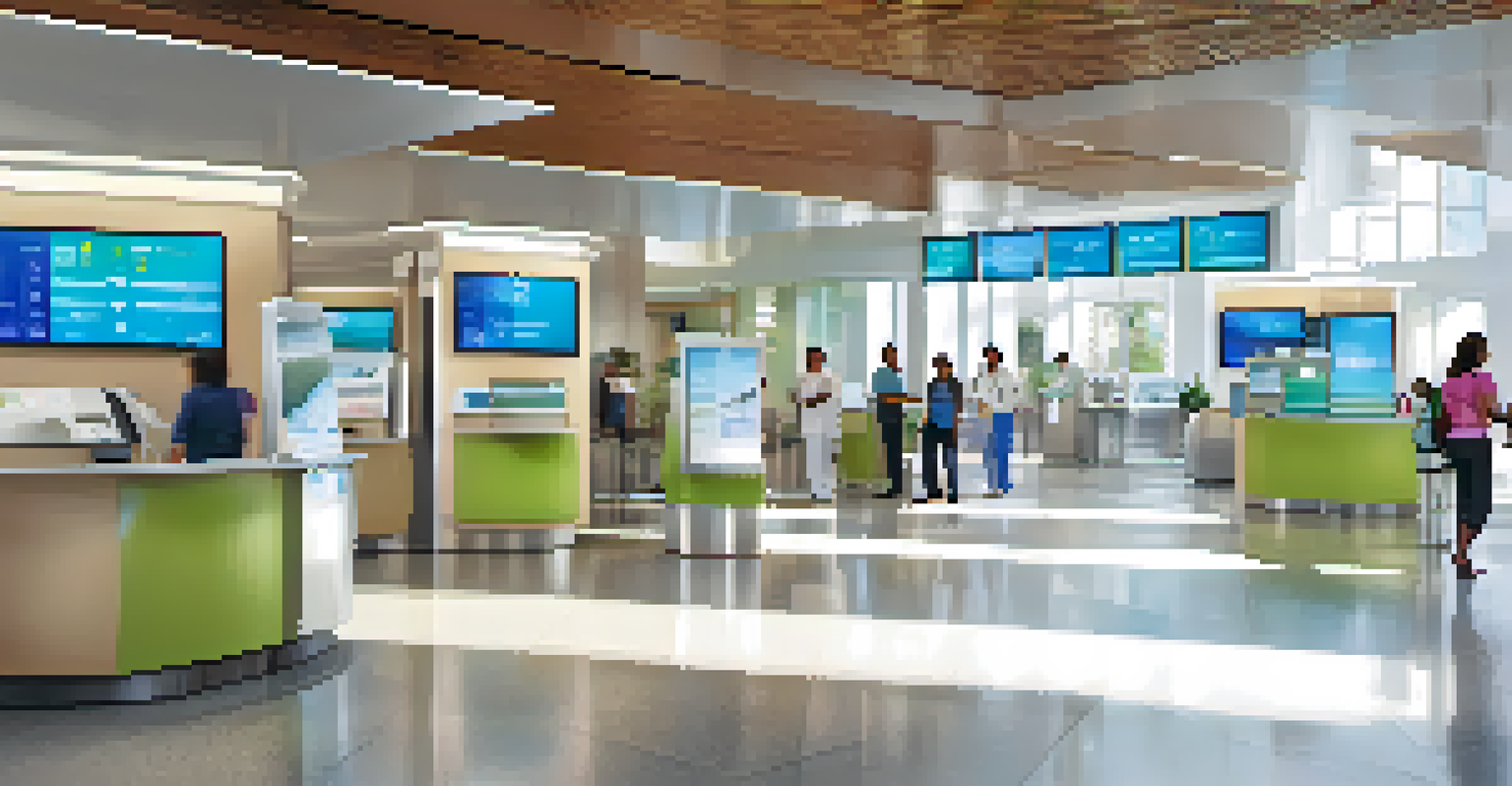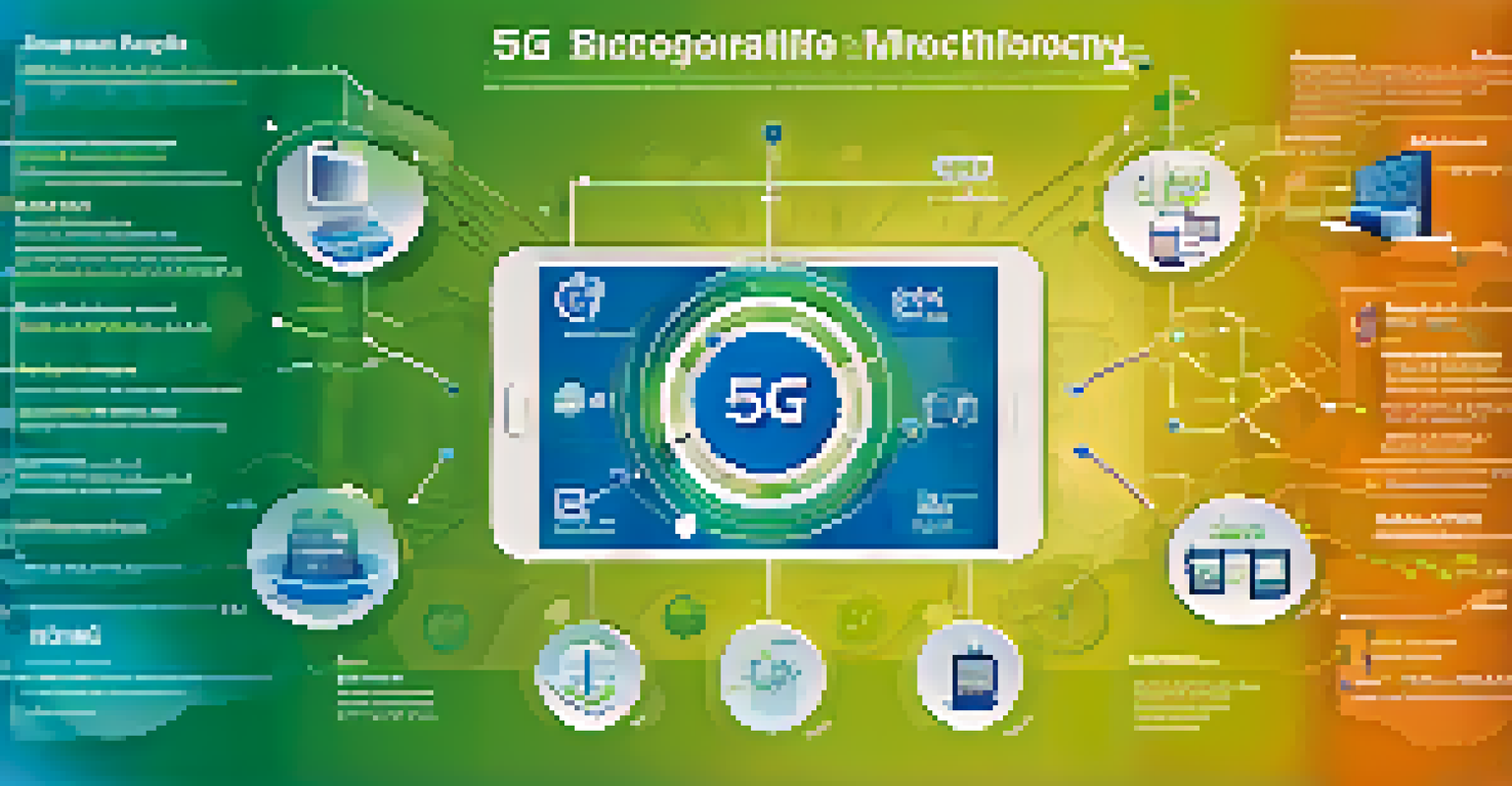5G Technology: Transforming Healthcare through Connectivity

Understanding 5G Technology and Its Basics
5G technology, the fifth generation of mobile networks, promises to bring faster speeds and more reliable connections. Unlike its predecessor, 4G, 5G can connect a significantly larger number of devices simultaneously, which is crucial in today’s increasingly digital world. This enhanced connectivity is not just about faster downloads, but also about enabling new applications and services that were previously unfeasible.
The future of healthcare is not just about treating illness, but about creating a system that empowers patients and improves outcomes through technology.
One of the standout features of 5G is its low latency, which refers to the brief delay in data transmission. Imagine a doctor performing surgery remotely; any lag could have dire consequences. With 5G, the near-instantaneous communication can empower healthcare professionals to deliver precise care from miles away.
Additionally, 5G's ability to transmit vast amounts of data quickly opens doors for advancements in telemedicine, remote monitoring, and the Internet of Medical Things (IoMT). As we delve deeper, it's clear that 5G isn't just a tech upgrade; it's a foundational shift for healthcare.
Telemedicine: A Game-Changer for Patient Care
Telemedicine has gained tremendous traction, especially in recent years, and 5G is set to take it to new heights. With improved connectivity, patients can consult healthcare providers from the comfort of their homes, eliminating the need for travel and reducing wait times. This is particularly beneficial for those in rural or underserved areas where access to specialists is limited.

Imagine a scenario where a patient can have a real-time video consultation with a cardiologist while sitting in their living room. With 5G, high-definition video calls become seamless, allowing for clearer communication and better patient assessment. This not only enhances the patient experience but also increases the efficiency of healthcare delivery.
5G Enhances Remote Patient Care
With 5G technology, telemedicine can provide seamless consultations and real-time health monitoring, significantly improving patient care.
Moreover, the integration of 5G with wearable devices enables continuous health monitoring. Patients can share real-time data with their doctors, leading to timely interventions and personalized care plans. This level of proactive healthcare is a significant step towards improving patient outcomes.
Remote Patient Monitoring: Enhancing Chronic Care
Chronic diseases require ongoing management, and remote patient monitoring powered by 5G technology can greatly improve this aspect of healthcare. With 5G’s fast data transfer capabilities, patients can wear devices that provide continuous health updates to their healthcare providers. This means conditions like diabetes or heart disease can be monitored in real time.
5G will transform the way we deliver healthcare, enabling timely and efficient care while keeping patients connected to their providers.
Consider a patient with diabetes who uses a smart glucose monitor. With 5G, their glucose levels can be transmitted instantly to their healthcare team, allowing for immediate adjustments to their treatment plan. This not only empowers patients but also helps doctors make informed decisions quickly.
Additionally, the ability to monitor patients remotely reduces the need for frequent hospital visits, which can be particularly taxing for those with mobility issues. This shift not only enhances the quality of care but also eases the burden on healthcare facilities.
Enhanced Data Sharing: Improving Collaboration Among Providers
5G technology also facilitates enhanced data sharing among healthcare providers, which is critical for coordinated care. With the ability to share large medical files, such as MRI scans or genomic data, in real time, doctors can collaborate more effectively, leading to better patient outcomes. This interconnectedness is essential in today’s complex healthcare landscape.
For instance, when a patient is referred from a primary care physician to a specialist, timely access to their medical history can significantly influence treatment decisions. With 5G, this information can be shared almost instantaneously, allowing for seamless transitions and continuity of care.
Smart Hospitals Improve Efficiency
The integration of 5G in healthcare facilities leads to the development of smart hospitals, enhancing operational efficiency and patient experiences.
Moreover, improved data sharing can reduce unnecessary tests and procedures, saving time and resources. The result is a more efficient healthcare system where providers can focus on what truly matters: delivering exceptional patient care.
Smart Hospitals: The Future of Healthcare Facilities
As healthcare facilities embrace 5G technology, the concept of smart hospitals is becoming a reality. These hospitals utilize advanced connectivity to enhance operations, streamline workflows, and improve patient experiences. From automated check-ins to real-time location tracking of equipment, 5G enables a more efficient healthcare environment.
For example, imagine a patient arriving at a hospital and being immediately guided to their appointment through a mobile app, which uses 5G to provide accurate location data. This not only reduces wait times but also minimizes confusion, creating a smoother experience for patients and staff alike.
Furthermore, smart hospitals can implement advanced analytics and AI-driven solutions to predict patient needs, manage resources, and enhance overall care delivery. The integration of 5G in these settings represents a significant leap forward in healthcare innovation.
Challenges and Considerations for 5G in Healthcare
While the benefits of 5G technology in healthcare are immense, there are also challenges that need to be addressed. One major concern is the security of patient data, as increased connectivity can expose sensitive information to potential breaches. Healthcare providers must implement robust cybersecurity measures to ensure that patient data remains safe and secure.
Additionally, the infrastructure required for 5G deployment can be costly and complex. Hospitals need to invest in new technologies and training for staff to fully leverage the advantages of 5G. This transition might pose logistical challenges, particularly for smaller healthcare facilities with limited resources.
Data Sharing Boosts Care Coordination
5G enables real-time data sharing among healthcare providers, facilitating better collaboration and improved patient outcomes.
Lastly, regulatory hurdles and policies surrounding data sharing and patient privacy must be navigated carefully. As healthcare continues to evolve with technology, it is crucial to strike a balance between innovation and ethical considerations.
The Future of Healthcare with 5G Technology
Looking ahead, the integration of 5G technology is poised to revolutionize the healthcare landscape. As connectivity improves, we can expect to see advancements in artificial intelligence, machine learning, and big data analytics, all of which can enhance patient care. The potential for customized treatments and predictive healthcare is on the horizon, thanks to the capabilities of 5G.
Moreover, with the increasing adoption of IoT devices, the healthcare system can become more proactive. Imagine a future where smart devices can alert healthcare providers about a patient's condition before it becomes critical, allowing for timely intervention. This shift towards preventive care could significantly reduce hospitalizations and improve quality of life.

In conclusion, 5G technology is not just a tool for faster internet; it's a catalyst for transforming healthcare as we know it. Embracing this technology can lead to a healthier, more connected world, where patients receive the care they need when they need it.